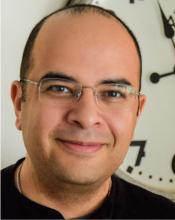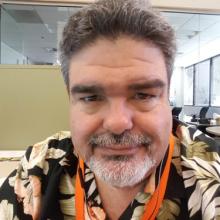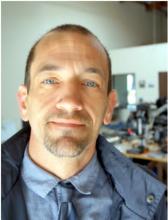Sustainable Storage: Approaches to Efficient and Practical Storage Reliability at Scale

Dr. Ahmed Amer
Associate Professor
Department of Computer Engineering, Santa Clara University, Santa Clara, CA
Thu, 11/17/2016
Abstract – Stored data needs to be protected against device failures, irrecoverable read errors, and other risks that become increasingly challenging at scale. At the same time, it is essential to manage underlying storage efficiently, and to do so in the face of incremental and dramatic changes to the underlying storage technologies. In this talk, we will discuss the building of large-scale reliable storage systems, and the problems encountered when employing new storage technologies. In particular we will discuss the problems posed by the recent shift in magnetic disk-based data storage to what is termed shingled magnetic recording (SMR). This shift is an important step in continuing the increase in data storage densities, but it also makes updates to existing data potentially destructive and requires software-based approaches to mitigate this behavior. We will go on to discuss the ways in which future storage systems software can address these challenges efficiently.
Dr. Ahmed Amer is an associate professor of Computer Engineering at Santa Clara University. His research areas are systems, particularly storage systems, operating systems, and distributed systems. His work has included the predictive management of data and storage, with recent work involving data grouping and the management of shingled magnetic recording technologies, the design of highly reliable systems at scale, and energy management. He is especially interested in alternative and upcoming storage technologies, and their most practical and effective application.
Image Comprehension on Mobile and Cloud Platforms

Dr. Soheil Ghiasi
Professor
Electrical and Computer Engineering, UC Davis, Davis, CA
Thu, 11/03/2016
Abstract – Convolutional Neural Networks (CNNs) have led to remarkable breakthroughs in a number of important pattern recognition tasks, such as image and voice recognition. Modern CNNs are composed of many layers, have millions (sometimes billions) of parameters, and require massive amount of computation to train them. The training is typically performed using large amount of data on massively-parallel servers equipped with graphics processing units (GPUs). Subsequently, the trained models are utilized in many application scenarios to run 'inference' on user's data, often on resourceconstrained mobile devices. The computational demand of running modern CNNs creates interesting technical challenges, in particular as it relates to deployment of trained models to resourceconstrained devices, such as smart phones and mobile robots. This talk presents an overview of this emerging area. We will also discuss some ongoing work in our group, where we focus on optimizing CNN inference via custom FPGA-based accelerators or mobile graphics processing units (mobile GPUs).
Dr. Soheil Ghiasi is a professor of electrical and computer engineering at the University of California, Davis. His research interests are design and optimization of embedded systems for signal processing, machine learning and multimedia applications. He received his B.S. degree from Sharif University of Technology, Tehran, Iran in 1998, and his M.S. and Ph.D. in Computer Science from University of California, Los Angeles in 2002 and 2004, respectively. He has served on the organizing and technical program committees of numerous technical conferences, and several journals in the general area of computing systems. He is a senior member of IEEE and ACM.
Controlling Inverters with Advanced Grid Functions

Mr. Mark Baldassari
Director of Codes and standards
Enphase, Petaluma, CA
Thu, 10/20/2016
Abstract – Solar Power and Photovoltaic technology is advancing quickly in the industry. Enphase Energy is a leader in developing technologies to meet the market demands. This talk will introduce basic concepts around solar systems. It will address the disadvantages of traditional systems versus the advantages of advanced microinverters from Enphase Energy. Data communications plays a vital role for a modern system. Enphase Energy addresses these challenges with a multi-processor, advanced communication, architecture. Finally, energy storage systems are gaining acceptance in the market. In the near future these systems will be commonplace. Battery chemistry plays a significant role in defining performance, safety and cost. From home sized systems to utility scale.
Mr. Mark Baldassari has over 30 years’ experience in engineering and product development and over 7 years with Enphase Energy, where he holds the position of Director, Codes and Standards. Currently, he actively participates in a number of Codes and Standards development groups both internationally and domestically. Domestically, Mr. Baldassari regularly participates in IEEE 1547 series of standards development with emphasis towards improving the grid integration of PV systems. He is involved with Underwriters Laboratory working on the harmonization of UL and IEC standards and a member of the UL 1699B Standards Technical Panel (STP) for DC Arc- Fault equipment. Mr. Baldassari is an active member of the SEIA Codes and Standards and SolarABCs PV Industry Forum. He is very involved with the drafting of the 2014 and 2017 NEC for articles 690 and 705 having been chairman of the Arc-Fault task group and active participant in the drafting sections on Disconnecting Means, Grounding, and Rapid Shutdown. Mr. Baldassari has bachelor degree in Electrical and Electronic Engineering from California State University Sacramento, USA.
Internet of Things (IoT) based Environmental Monitoring Systems

Mr. Shivakumar Mathapathi
Co-Founder and CTO
Dew Mobility, CA
Thu, 10/06/2016
Abstract – With recent development in Internet of Things (IoT), several environmental researchers, scientists, Government and Corporates initiated monitoring the environmental parameters. The system is made up of three layers such as sensor layer, Hardware layer and Cloud layer. It makes it possible to sense, acquire, process and transfer environmental information over a large area in real time. With today’s lecture, the goal is to demonstrate few of the environmental sensors such as temperature, humidity, air quality, CO2, light and pressure sensors interfacing with ARM Mbed microcontroller (MCU) and transferring into the Amazon Web IoT services. Once the Environmental information is available at the cloud, we could monitor the data on mobile phone as well on the desktop/Laptop computers. One could provide the data analytics to end users utilizing analytics tools offered by various Cloud providers such as IBM Bluemix, AWS IoT, Microsoft Azure, and GE-Predix. The lecture session helps attendees to learn these IoT technologies and services.
Mr. Shivakumar Mathapathi has over 25 years of experience in product development, design and faculty. Mr. Mathapathi is a seasoned technologist, entrepreneur, instructor and practitioner on the Internet of Things (IoT) with extensive experience as lead faculty, lab-practice and mentorship in executing smart city, smart agriculture, assisted living and other IoT related projects. He has designed study programs and academic syllabus for “The IoT course” a 4- units Master of Science course taught at Santa Clara University and CA Polytechnic State University. He led the capstone design project at Cal Poly San Luis Obispo to design and develop IoT cloud platform. He is the Capstone Lecturer at MS Information System, Smart City project, Leavey School of Business, Santa Clara University, and served as lead instructor for IoT course at Cal Poly, San Luis Obispo.
UAS - In the Coming Robotic Revolution, The first wave of attack

Mr. Sean Headrick
Founder/CEO
AeroTestra, Inc.
Thu, 09/15/2016
Abstract – Unmanned aircraft have opened possibilities we have only imagined. Moreover, the democratization of this technology has put its potential within the grasp of anyone willing to explore. This lecture will look at the current state of unmanned aircraft systems and the roles that are emerging in the commercial sector. Focusing primarily on “remote sensing”, we will discuss applications including “structure from motion” or photogrammetry, hyperspectral and multispectral imaging, as well as water quality monitoring. We will also look forward to how this field may evolve leveraging technologies like machine learning, computer vision and rapidly increasing processing power. As a developer of UAS we will explore the unique approach to aircraft design for these applications, looking at platform reliability, sensor selection, and optimizing for specific data collection. This will be followed by a Q&A session, to explore in more detail, subjects of interest to those attending.
Mr. Sean Headrick is CEO and Founder of Aerotestra which he started in 2012, and is proud to be an advocate for, and contributor to the exciting robotics evolution we are experiencing today. A self taught designer and “engineer”, he spent the majority of the past 25 years designing and building everything from cabinets and furniture to treehouses and all variety of things in between. His current project, developing unmanned aircraft systems, has tapped into several passions at once that he hopes to share and learn from this ever growing community.